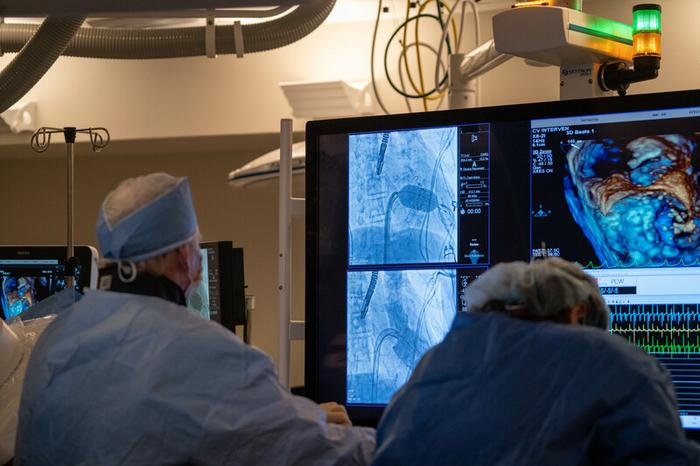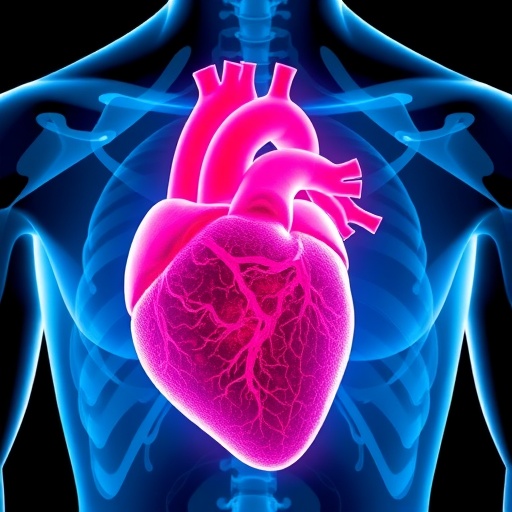Short-term increases in air pollution can cause problems for a lot of people, but especially to those with diagnosed or undiagnosed heart disease. But it’s not just a potential issue for pollution coming from cars and industrial processes.

Credit: Intermountain Health
Short-term increases in air pollution can cause problems for a lot of people, but especially to those with diagnosed or undiagnosed heart disease. But it’s not just a potential issue for pollution coming from cars and industrial processes.
New research from Intermountain Health in Salt Lake City shows that pollutants trapped in lower, colder layers of air in mountain-region communities present sometimes higher risk for this population, while wildfire smoke from often distant locales may also impact risk.
“We’re finding that air pollution is affecting different people, in different ways, in different seasons,” said Benjamin Horne, PhD, a professor of research and director of cardiovascular and genetic epidemiology at Intermountain Health. “This study reinforces that, if someone is having chest pains, they should go to the hospital, no matter what season it is.”
Findings from the Intermountain research were presented in a pair of studies at the American Heart Association’s Scientific Sessions 2023, which is being held in Philadelphia.
In the first study, researchers from Intermountain examined the association between fine particulate matter (PM2.5) and ozone air pollution, and hospitalizations for unstable angina (unstable chest pain that does not result in organ damage) and acute myocardial infarction (heart attack in which part of the muscle dies) during two distinct seasons in Utah when these types of pollution is at higher levels.
Researchers studied patients during summer wildfire season (June to October), and during the winter inversion season (November to March), when cold air is trapped by surrounding mountain ranges. Temperatures rise during an inversion along with elevation, which keeps pollutants like those from vehicles and industry in that cold, lower layer, but inversions don’t happen in the summer. Short-term PM2.5 elevations in summer come from wildfire smoke and usually that smoke is generated in places like California or Oregon that are 700 or more miles away.
For the study, researchers surveyed the health records of 21,414 people treated for heart attack or unstable chest pain between 1999 and 2022 at 11 hospitals throughout Utah’s Wasatch Front region.
Researchers found that increases in PM2.5 particulate matter were associated with increased risk of heart attack during the winter inversion season, but not summer wildfire season.
They also found that risk of unstable chest pain increased during both seasons, but that people waited up to two weeks to seek treatment for it during the winter. The research team found no association between hospitalization rates and ozone pollution levels.
In the second study, researchers looked at the association between PM2.5 and ozone, and hospitalization of patients with atrial fibrillation. To do so, they surveyed the electronic heath records of 347,157 people with a previous atrial fibrillation diagnosis who were hospitalized for any reason; 25,601 hospitalized specifically for atrial fibrillation, and 77,893 given a first-time atrial fibrillation diagnosis between 1999 and 2022 at the same 11 hospitals.
They found that short-term increases in PM2.5 led to higher all-cause hospitalization in patients already diagnosed with atrial fibrillation, but no increase in first-time atrial fibrillation diagnosis.
Researchers found hospitalization primarily for atrial fibrillation was also higher during the summer wildfire season (about 9% to 10% increase for each day of high PM2.5 levels, and only 3% in winter). The research team found no association between hospitalization rates and ozone pollution levels.
These findings suggest that “atrial fibrillation is being triggered by air pollution, but it’s something else that’s making them go to the hospital,” said Horne.
“It could be that when air pollutants are inhaled, it causes inflammation in your lungs or your circulation or heart, and changes the way your body’s functioning,” he added.
The differences in people coming into the hospital during the summer and winter could also be behavioral, Dr. Horne noted, that their perception of risk may be different in the summer, and also that Utah’s population tends to swell in the warmer months due to tourism.
“The bottom line is that if someone is thinking maybe they should go to the hospital or maybe they shouldn’t, they should fall on the side of caution and get themselves evaluated,” Dr. Horne said.
###
Method of Research
Observational study
Subject of Research
People




